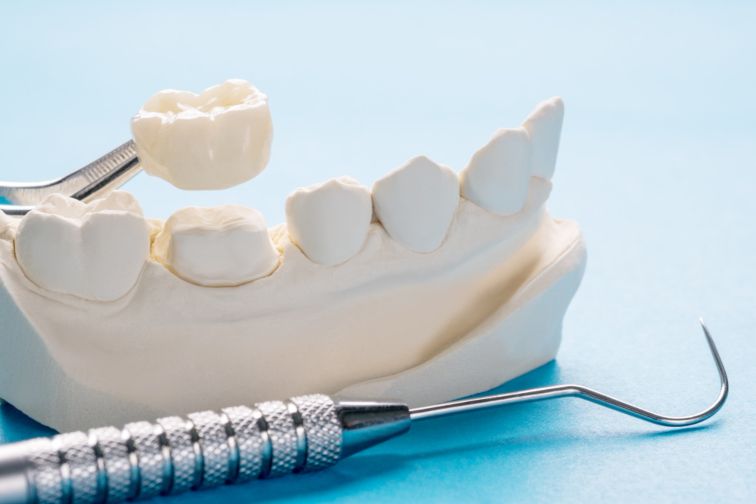A dental onlay is used to repair a tooth when a cavity is too large for a regular tooth filling. It replaces the missing tooth structure by bonding the material directly onto the compromised section of the tooth. Onlays can cover larger amounts of the tooth surface compared to dental inlays. Dental onlays can replace one or more cusps of one tooth. A cusp is the section of the tooth that helps when chewing and can be found on your back teeth and canines.
A dental crown is a cap that dentists put over a tooth. Dental crowns restore the normal shape, size and function of a tooth. Crowns can also make your teeth stronger and they improve the way they look. Crowns are also used when a cavity is too large for a dental filling. Dental crowns can be made from a variety of materials: ceramics, metal alloys, porcelain, and porcelain that has been fused to metal or composite resin. Regardless of the material that is used, the crown will be coloured so that it blends in with your natural teeth. When more than one tooth needs to be replaced dental bridges, which are helped by dental crowns, are used.

First of all your dentist will assess the damage on your tooth and see whether a crown or onlay is most suitable for your case. Once the dentist has determined whether you need a crown or onlay you may expect the following:
Receiving onlays preserves more of the natural structure of the tooth. If keeping your teeth naturally is a concern, you can get your onlays adjusted and repaired if they get damaged before moving to crowns or other restoration methods.
There isn’t any specific lifetime for onlays, but most will last around 10 years. Dental crowns can last between 5 to 15 years, depending on the quality of production. The most important thing when it comes to the longevity of your dental appliances is maintaining good dental hygiene. Aside from maintaining good dental hygiene, you must be aware of and avoid some habits that can wear down your crowns or onlays. Some of these habits can be:
Also note that the remaining tooth structure underneath the dental appliance must remain strong and healthy because if too much decay occurs your appliance will be removed and replaced with another form of restoration.
One of the deciding factors of why an onlay may be better is the price. Restoration with onlays is usually at the fraction of the cost compared to crowns. Onlays generally cost from $650 to $1,200 per tooth, while dental crowns cost from $500 to $3,000 per tooth.

